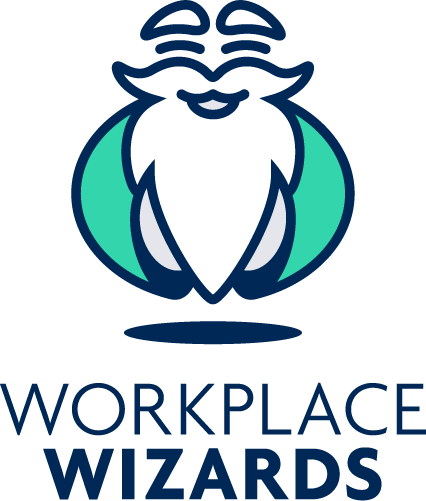Top 3 Tips to try before you even consider negotiating
I’m amazed after my many years in IR and countless EBA negotiations, I still see managers and HR practitioners who don’t really ‘get’ how to bargain industrially. That is, they don’t apply the bargaining theory on the one hand, and balance industrial realities with the other.
The bargaining table is a lonely place; I don’t say the above to criticise frazzled HR managers struggling with an unfamiliar process. But, I suspect the poor bargaining outcomes I see and hear about result from a lack of planning by the managers involved. I suspect lack of knowledge of the technical aspects of the process, or of bargaining theory generally, also plays a part. Probably some terrible outcomes that occur might even be explained as a result of such negotiators getting ‘bulldozed’ or intimidated by some overbearing union official who is able to wrest control and manipulate the process to suit his/her interests and desired outcome.
I hope the below article might assist those HR practitioners who are new to EBA bargaining or the IR side of their ‘patch’, or those managers who could otherwise see the below as embracing a new (and I’m sure better) way of doing things. I’d love your feedback, how do you plan for success with your EBA? What planning did you do which turned out to be incredibly valuable for the negotiation itself? If there’s sufficient interest, in future articles I’ll do ‘Top 3 Tips’ for each stage of the EBA negotiation process.
Stage 1 – Planning for Success
Under the Fair Work Act 2009 (Cth) (“FW Act”) we calculate 14 arduous hoops employers must jump through from initiating bargaining for the proposed EBA through to it applying on site, which can be cumbersome. In subsequent articles I’ll provide a rough outline of how an ‘ideal’ negotiation would run for employers. However, today’s article will outline how some structured and organised planning will save you hours and tens of thousands of dollars during the negotiation itself.
Planning for success means doing the work ‘up front’ so that you and your management team are prepared for an efficient, productive and focused EBA negotiation. By that I mean you can roughly work towards about 8 – 10 meetings from ‘cradle to grave’, and (assuming one week to 10 days between meetings) this process taking around 2-3 months. In subsequent articles Ill outline why alternate approaches, such as the ‘do it in a day’ or ‘weekly meetings’ waste more time – and create less optimum outcomes – than the above timeline. Prior to any bargaining commencing, the ‘Top 3 Tips’ I have for necessary preparatory work by managers are:
- Tip 1 – Have a management ‘scoping meeting’ whereby your managers can consider and discuss the best and worst features of your current EBA and changes sought in the proposed agreement; and
- Tip 2 – Assist your non-union workforce to select adequate, reasonable and credible employee bargaining representatives (“EBRs”);
- Tip 3 – Announce to employees that EBA bargaining will shortly commence and communicate to them the organisation’s needs and wants in the upcoming process.
Tip 1 – Hold a Pre-bargaining Management Scoping Meeting
In seeking to re-negotiate a collective agreement it is important for employers to have considered the best and worst features of your current EBA and, thus, those clauses you wish to modernise or amend, or the workplace practices you seek to make more efficient or cost-effective. Well before bargaining begins with employees (and likely a trade union) your managers should review the current EBA and identify specific areas you wish to change and otherwise modify your current operations. This will then form the basis of a management ‘log of claims’ which you can use throughout the negotiation to ‘flag’ to employees the areas of the proposed EBA / current operations you have to modify and alter employees’ work practices as a result.
It is crucial for those negotiating the proposed EBA to have clear input, and ‘riding instructions’ from the ops team or senior management as to what the organisation should push for versus what can be ‘negotiated away’ during the process. Such a meeting gets the buy in from management and enables you – once you start negotiating – to know exactly what everyone’s priorities and ‘die in the ditch’ claims/clauses are.
Tip 2 – Assist Non-Union employees select EBRs
One of the more significant areas of the FW Act reforms is the status of trade unions as “default” bargaining agents; so long as there is one union member at a workplace the trade union will automatically become the default bargaining agent for that union member. This often means the trade union will then look to position themselves as the default or de facto bargaining representative for all employees, regardless of whether they are union members or not.
The practical effect of an employer permitting bargaining on such a basis is the ‘tail wags the dog’. That is, the small but vocal union minority then becomes transformed as what ‘all the employees want’ as opposed to the fraction of your workforce who are aware of, and determined to push for, often inflated union claims. Given union membership in the private sector is currently running at around 13%, do you really think this is an inclusive and sensible process to only – as I see so, so many employers do – conduct a negotiation talking to the union official who represents 10-15% of your workforce? This is especially problematic because this small minority will often be the hardest segment of your workforce to please (as the union will not instruct them to ‘vote Yes’ until most, if not all, of the union log of claims has been accepted).
In my experience, the more representative and ‘balanced’ the parties negotiating a proposed EBA are, the more likely the process will be more efficient, reasonable and geared toward achieving practical outcomes relevant to the individual workplace involved (as opposed to union ‘head office’ claims, insisted upon by a union official and relevant only to maintaining an artificial minima in your industry sector).
To plan for success you must avoid the lazy temptation to rely solely on the union delegates (your employees) and union organisers to negotiate the best outcome for your entire agreement-covered workforce. As an alternative, this requires you to take steps to proactively assess, select and discuss with relevant employees who would be ideal EBRs for your non-unionised portion of the workforce (which, we note, is often the overwhelming proportion of employees).
The FW Act is silent on any guidance, or the requisite process, for employers seeking to assist employees select adequate EBRs to represent them. Given your unionised workforce will be ably represented by their professional advocate they have paid for, assisting your non-unionised workers nominate 3-4 adequate EBRs who are reasonable, sensible, credible and good ‘leaders’ amongst your non-managerial or supervisory workforce is a key step in creating the right environment to have a truly representative, balanced and efficient EBA negotiation.
Tip 3 – Communicate with your employees
The FW Act imposes strict requirements and time limits on employers to provide notice to every employee that bargaining for the proposed EBA has commenced, and to alert employees to their right to be represented during the bargaining process. This is done through providing a “Notice of Representational Rights” (“NORR”) to employees covered by the proposed EBA.
Owing to some recent Fair Work Commission (“FWC”) decisions, you must be mindful not to include this document alongside other bargaining or non-bargaining related documentation or paraphernalia (such as the EBR nomination forms). Hand these out separately. Email me for a suggested NORR for you to distribute to the employees likely covered by the proposed EBA and I would be happy to provide one which complies with all legislative requirements.
You should use this NORR exercise as the first communication to employees to be covered by the proposed EBA to discuss your organisational objectives for the upcoming process, those areas and entitlements which will remain unchanged, those the organisation will be seeking to update/amend/re-word and, crucially, the ‘WHY’ behind these proposed changes.
Employees should be stepped through the state of the organisation, its finances and organisational plans, and how such information relates to the ‘management log of claims’ which will be presented as part of the upcoming negotiation. Employees should then be provided the EBR nomination forms and stepped through the nomination process and other information (such as who to speak to for further enquires, date to return nomination forms, EBR contact details etc.).
Once the above three tips have been acted on – and only then – you can consider contacting the relevant union organiser and seeking to lock in proposed date for the initial negotiation meeting. How to conduct the crucial ‘Initial Meeting’ and starting the negotiation on the right foot will be covered in my next article.
Workplace Wizards partners with employers throughout EBA negotiations to provide you the required documents, strategy and tips, bargain ‘in the room’ with you (if needed) and ensure you are meeting the requisite procedural deadlines. Email me at support@workplacewizards.com.au for a copy of a NORR, my ‘Proposed EBA Planning for Success’ template or to find out more.



0 Comments Leave a comment
Comments are closed.